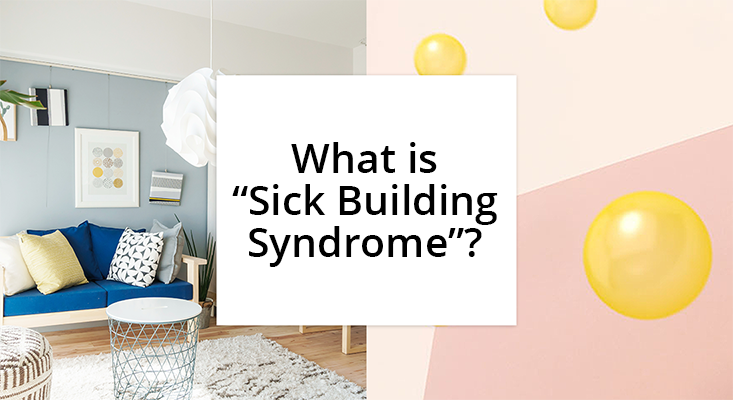In recent years, it is reported that many people have complained of symptoms associated with acute discomfort, e.g., eye or throat irritation; headache; dizziness and nausea after spending some time in new buildings or newly renovated housings.
These symptoms are defined as "Sick Building Syndrome". There have been real needs for the investigation into cause of Sick Building Syndrome and its solutions.
We have various products with abilities to absorb and decompose formaldehyde, which is a major cause of "Sick Building Syndrome". “Hi-Clean*)” technology can be added to most of our products.
*) Hi-Clean technology adds formaldehyde absorption and decomposition abilities to the product.
What is “Sick Building Syndrome”?
The term "Sick Building Syndrome" is used to describe a range of symptoms that pose a serious health risk to building occupants, which are caused by polluted air, containing chemicals used in construction materials or furniture, or combustion gases generated by equipment such as heating. Poor ventilation systems designed for energy-saving are believed to be a factor as well.
- Use of chemical substance for buidling materials (walls,floors,ceilings)
Use of furnitures and daily commodities - Poor air circulation
- Combustion gases generated from equipment such as heating
- Air tightness in houses
- Eye or throat irritation
- Headache,dizziness
- Nausea,feeling sick
- Difficulty in breathing
- Dry or itchy skin
- Difficulty in concentration,lassitude,fatigue
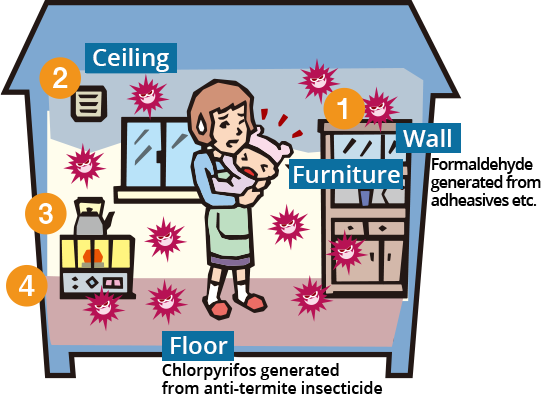
So many sources of formaldehyde!
Formaldehyde, which is one of the majour causes of "Sick Building Syndrome", is contained in interior decorating of houses, adhesives used for furniture or flooring, or building materials and is emitted inside the buildings. Also, formaldehyde can be transmitted from invisible areas as it is often used for sub-flooring. Thus extra caution is needed for possible pathways for formaldehyde. Tiger Hi-Clean Board provides the ability to absorb and decompose formaldehyde emitted inside the building at short times and creates safe and comfortable indoor spaces.
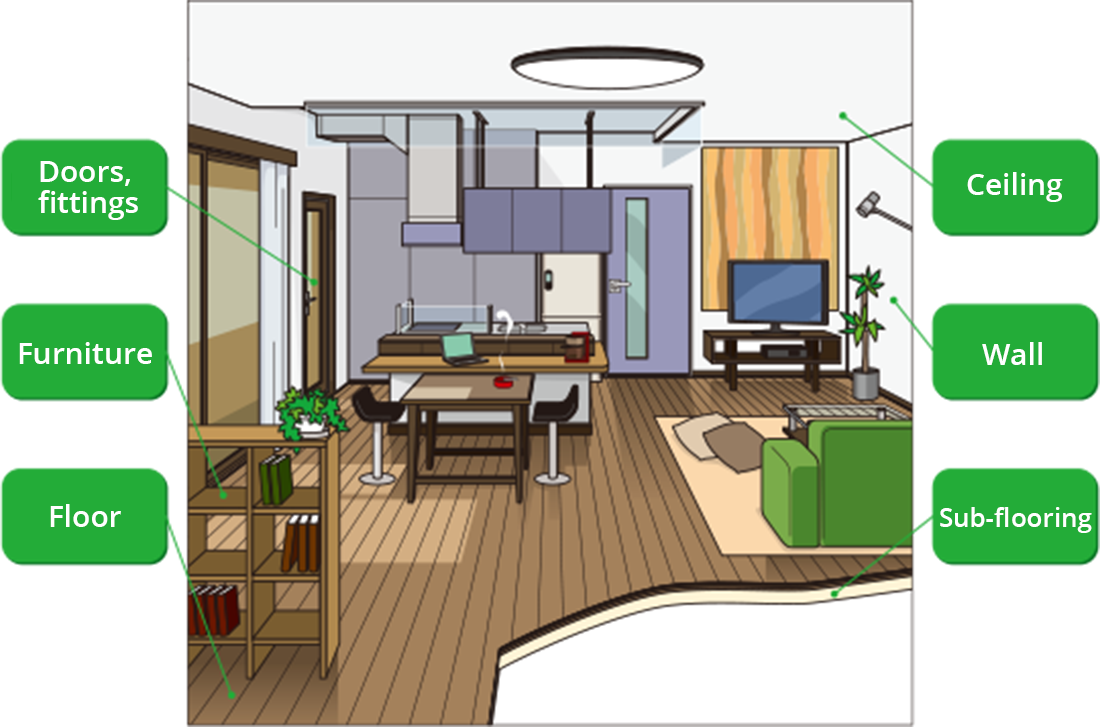
The levels of formaldehyde inside buildings increase as temperature rises
The amount of formaldehyde emission increases significantly as room temperature rises. Especially in summer, the amount of formaldehyde emission from building materials, including structural plywood, plywood reinforcement, plywood under flooring, particle board, increases due to temperature rise in the whole housing.
Room temperature and Amount of Formaldehyde Emission(Flooring)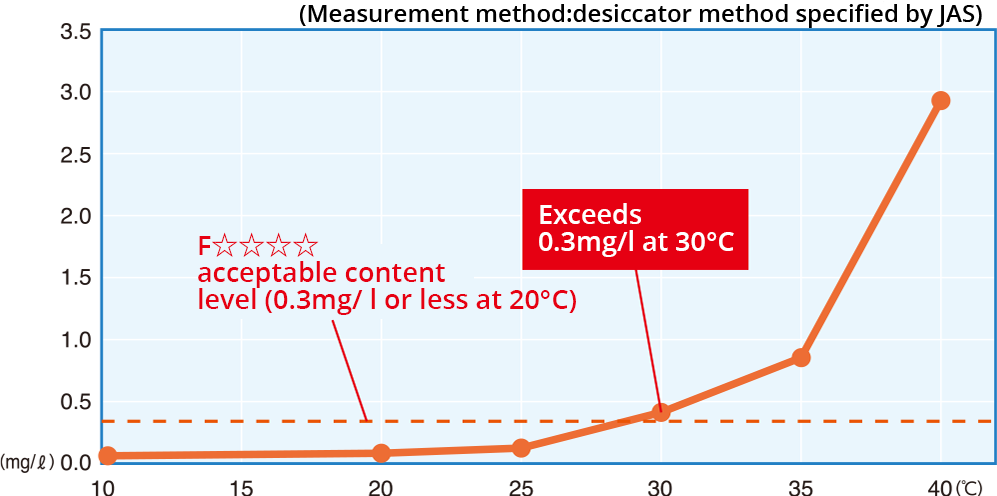
Our main products for countermeasures against Sick Building Syndrome Tiger Hi-Clean Board
- Absorbs and decomposes formaldehyde emitted from furnitures and building materials in buildings such as newly-built or renovated houses in a short amount of time.
- Achieves levels of formaldehyde 0.05ppm, which is less than the maximum value of 0.08ppm set by the Ministry of Health, Labor and Welfare in Japan under certain conditions.
- No reemission of formaldehyde as it is chemically absorbed and decomposed, unlike physical adsorption.
- No loss of excellent performances of plaster board as itself, such as noncombustibility, easy installation, etc.

High concentration of formaldehyde may be found in spaces of interior walls and transmitted into adjacent rooms through plaster boards or vinyl wall coverings. However, levels of formaldehyde emission from internal walls or ceilings into rooms can be almost suppressed by using Tiger Hi-Clean Board.
When formaldehyde is absorbed by Tiger Hi-Clean board, it is decomposed into a harmless substance and water (H20) by the decomposing agent contained in the board.
*Since very small amounts of these substances are produced,their presence does not affect the board’s performance
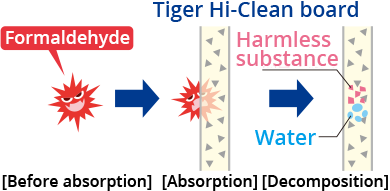
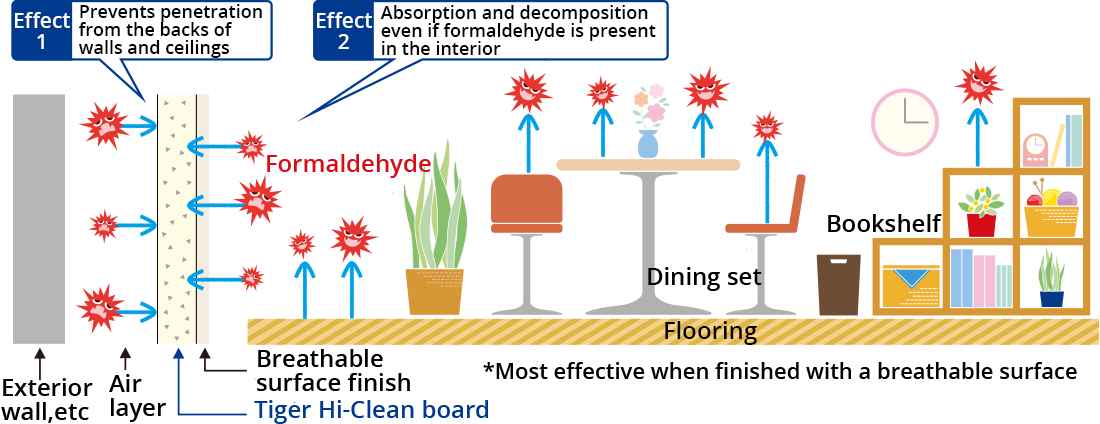
Tiger Hi-Clean board is a new technology that significantly reduces formaldehyde retention and environmental load compared with that of gypsum boards commonly used in construction, as certified by the Technology Testing Certification Program of the Building Center of Japan.
Technology name:
Inside air volatile organic compound reduction technology (building material)
“Tiger Hi-Clean Board”
Certification number: BCJ-Examination Certificate-213
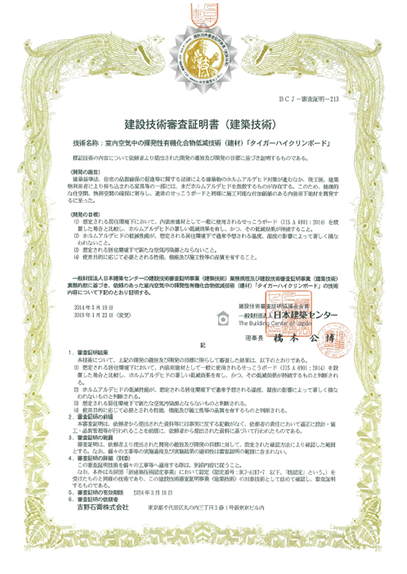
Solutions for Sick Building Syndrome - Product list
[Gypsum board products/JIS standard]
[Gypsum-based board products]
Standard Tiger board with added Hi-Clean functionality(formaldehyde absorption decomposition).
Tiger Hi-Clean board with additional decorative processing applied.
Decorative boards with Hi-Clean functionality for use in ceilings.
Sound absorptive and non-absorptive decorative boards for use in ceilings.All variants have Hi-Clean functionality
Ceiling board designed for an on-site painting with sound absorptive and Hi-Clean functionality.
Hi-Clean board with humidity control (moisture absorption and release) functionality added.
Hi-Clean skirt board with decorative processing applied.
Tiger Hi-Clean skirt board with improved humidity control performance. Certified as a construction material for use in providing humidity control.
High performance variant of the Tiger Hi-Clean board effective in reducing acetaldehyde concentration.
[Putty]
Joint treatment agent for specially designed for top-coat application to Tiger Hi-Clean board.
[Painted wall materials]
Painted wall material with humidity control and formaldehyde absorption and decomposition functionality.


